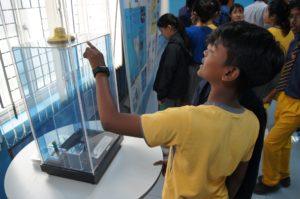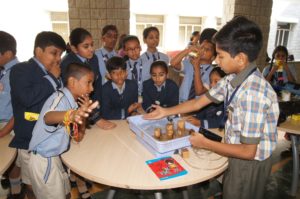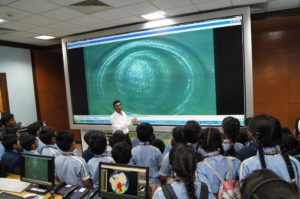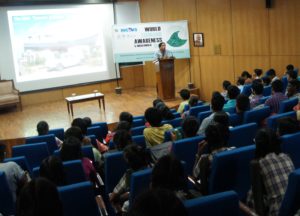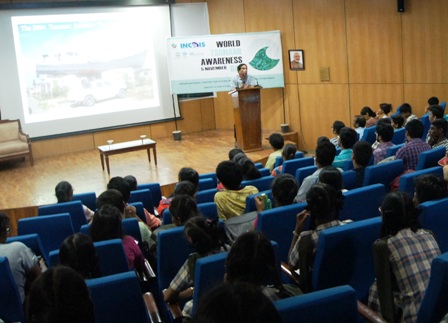Tsunami World Awareness Day: Mega-destructive events such as tsunamis though low in frequency cause irreparable damage. The only way to mitigate such disasters is to keep the public alert and aware. With this aim the UN General Assembly has instituted World Tsunami Awareness Day and called on all countries, international bodies and civil society to observe the day, in order to raise tsunami awareness and share innovative approaches to risk reduction.
This special day started out as the brainchild of Japan, which due to its repeated, bitter experience has over the years built up major expertise in areas such as tsunami early warning, public action and resilience. The date for the annual celebration was chosen to coincide with and honour the true story of “Inamura-no-hi”, meaning the “burning of the rice sheaves”. During an1854 earthquake a farmer in Japan saw the tide receding, a sign of a looming tsunami. He set fire to his entire harvest to warn villagers, who fled to high ground. Afterwards, he built an embankment and planted trees as a buffer against future waves.
The UN office for Disaster Risk Reduction (UNISDR) is facilitating the observance of World Tsunami Awareness Day in collaboration with the rest of the United Nations system. World Tsunami Awareness Day 2018 is thus aligned with the International Day for Disaster Reduction and the “Sendai Seven Campaign” and focussed on Target “c” of the Sendai Framework for Disaster Risk Reduction which aims at reducing direct disaster economic loss in relation to GDP.
The Intergovernmental Oceanographic Commission (IOC) of UNESCO works to coordinate national and regional tsunami early warning services, raising global awareness about effective actions, policies and practices to reduce exposure to disaster risk through its four Tsunami Warning and Mitigation Systems for the Pacific, Indian Ocean, Caribbean, and North-Eastern Atlantic, Mediterranean and Connected Sea regions. IOC also assists Member States through education programmes and regular tsunami communication and evacuation exercises, increasing the coordination, readiness for and understanding of tsunamis among citizens and communities around the world. India’s State-of-the-Art Tsunami Early warning centre is hosted at the Indian National Centre for Information Services (INCOIS), Hyderabad. INCOIS is India’s premier institution for Operational Oceanography. The Warning Centre is a recognized by IOC- UNECO as a Tsunami Warning Service Provider for the Indian Ocean serving 25 Indian Ocean Rim countries.
Today (5th November 2018), on the occasion of the 3rd World Tsunami Awareness Day, ESSO-INCOIS organized the following activities:
1) Open House Programme that catered to 9 schools and colleges, providing students with a chance to interact directly with scientists in India’s Tsunami Early Warning Centre and understand in detail about the Tsunami system through audio-visual aids. In all over 760 students participated.
2) School students also participated in a special model exhibition, showcasing their knowledge and understanding of tsunamis. They prepared models and demonstrated them to other student visitors.
3)A special lecture “Science of Tsunami” was delivered by distinguished expert Professor C. P Rajendran, Jawaharlal Nehru Centre for Advanced Scientific Research (JNCASR), Bangalore . He detailed the basics of tsunami science , available data along with an an overview of historical and geological tsunami records. In particular he discussed geologic evidence in Andaman & Nicobar for major tsunamis in the 5th, 10th, and 14th centuries CE and six pre-1960 events over the past 2000 years.

